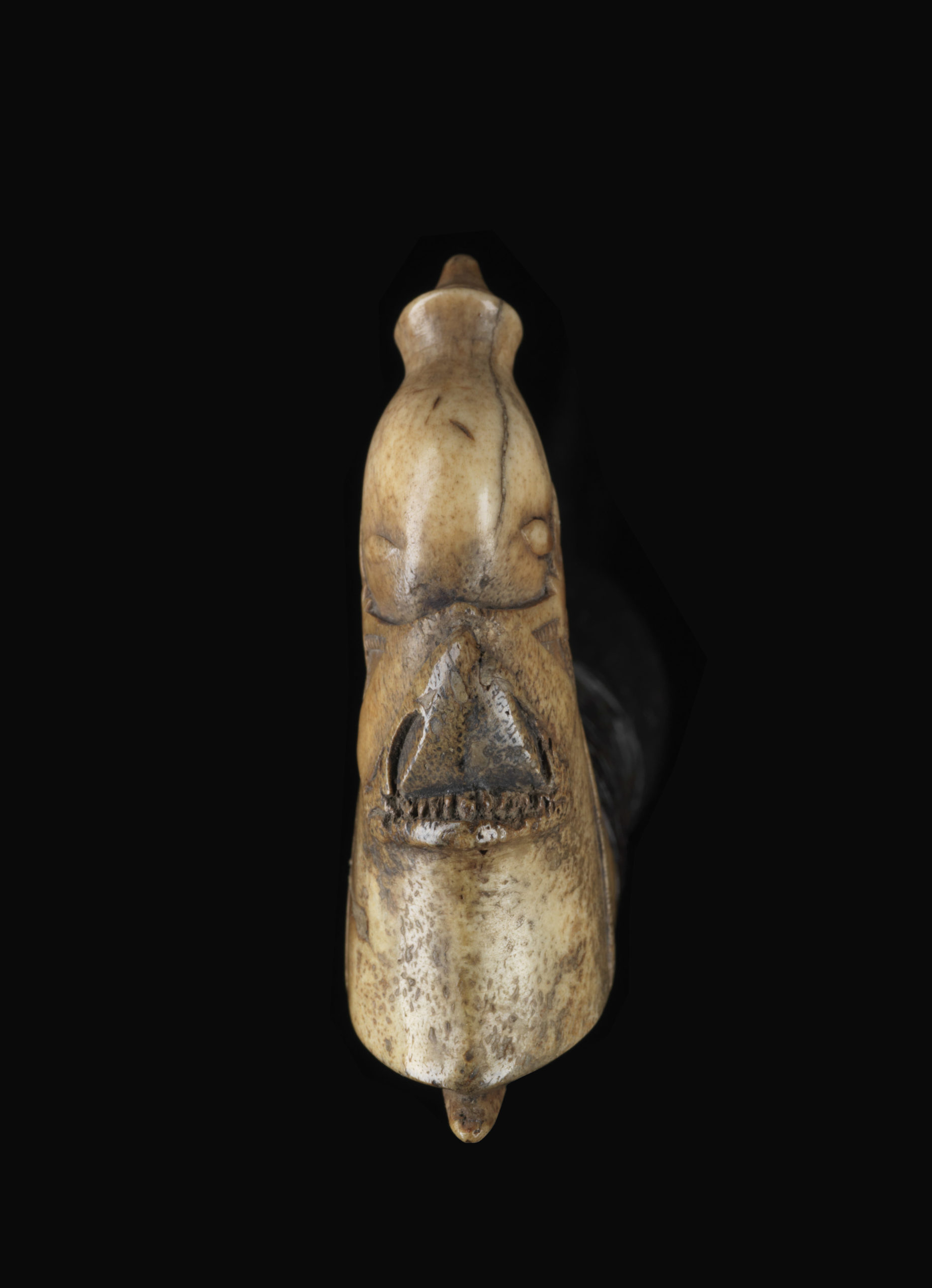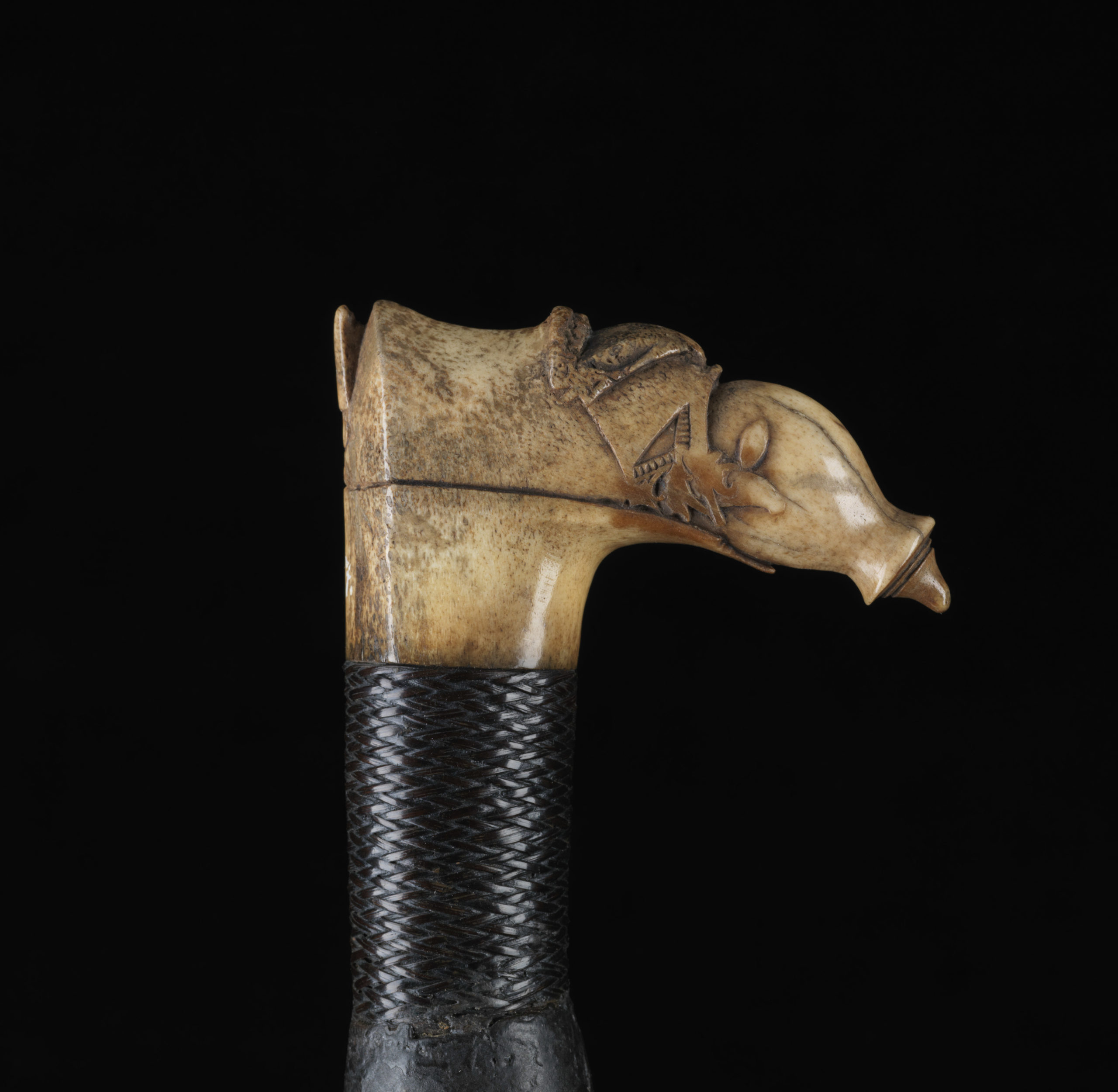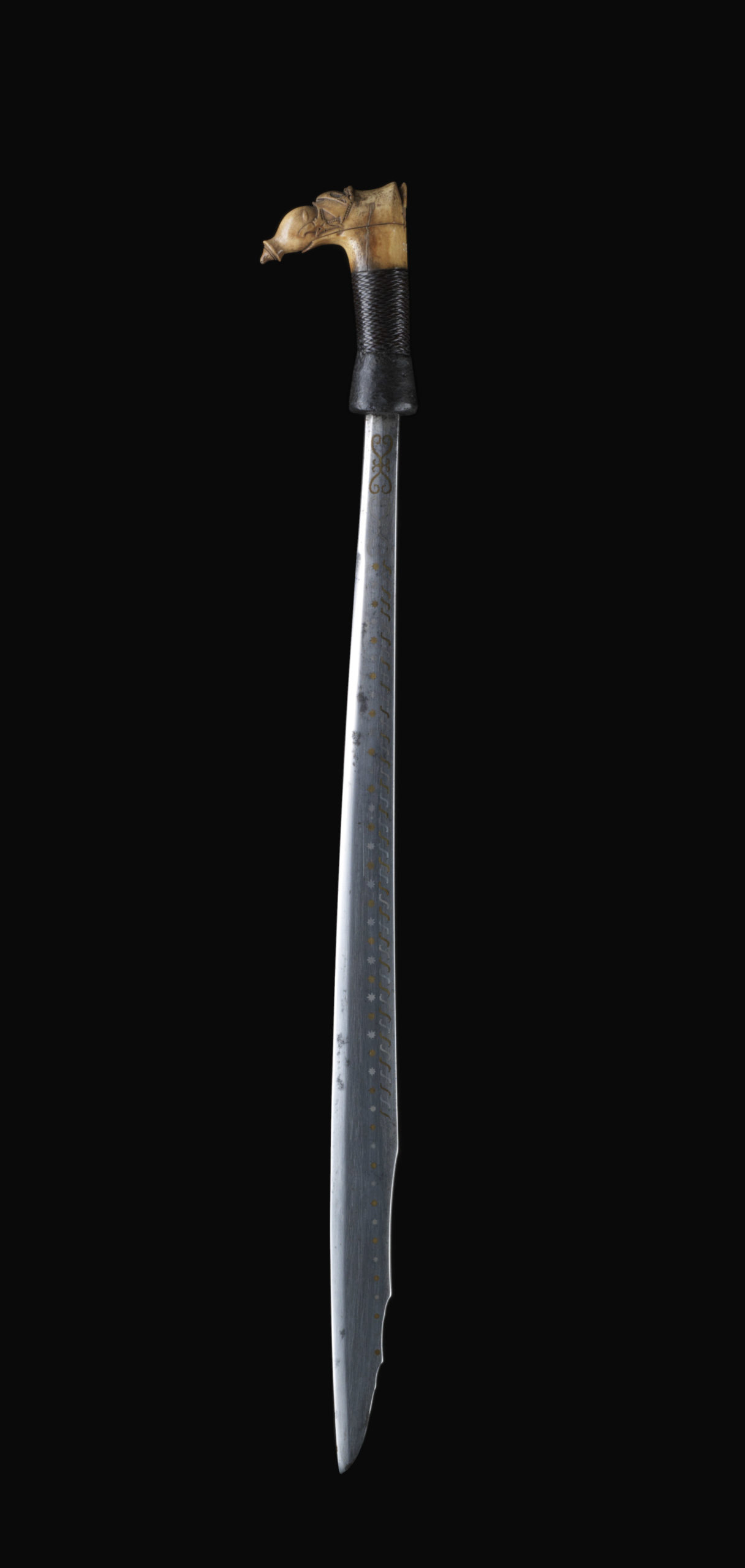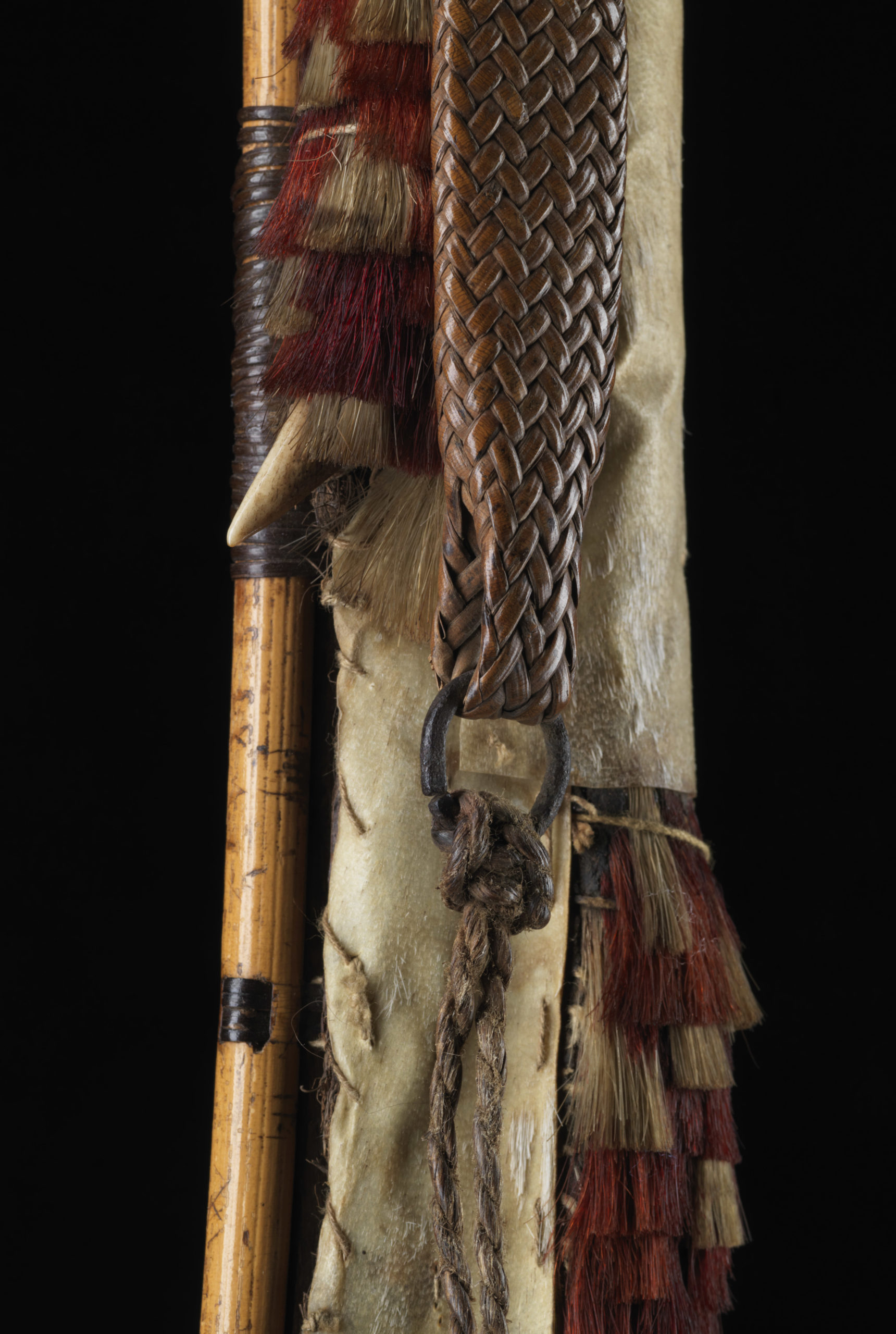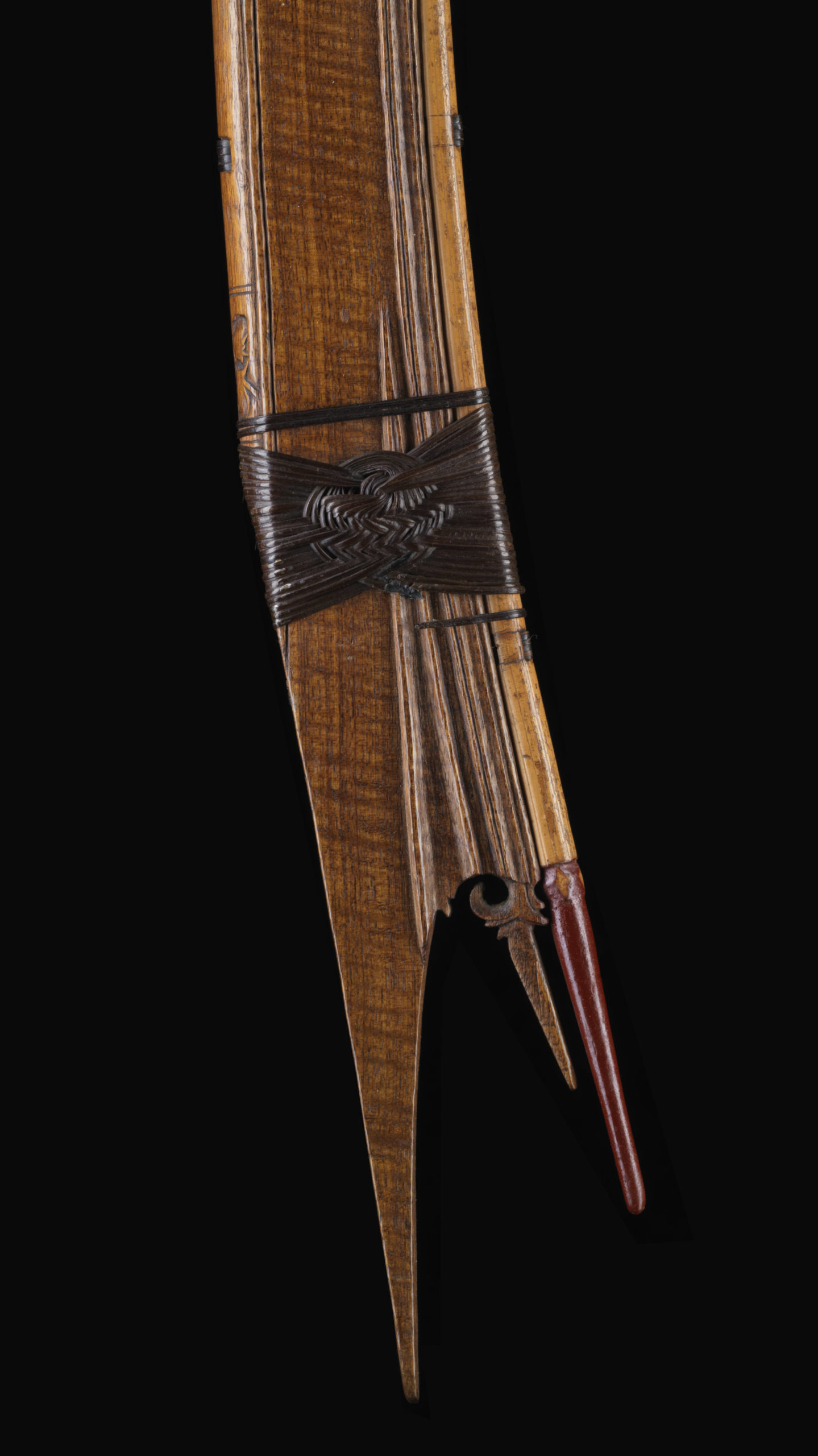Mandau
| Object | Mandau “parang ilang”, “malat” |
| Culture | Borneo/Kalimantan, Dayak, Bahau-Region (Kajan, Modang?) |
| Time | 19th century |
| Dimensions | Length 67 cm |
| Material | Steel, soft metal, stag horn, rattan, goat hair, wood, bamboo, animal skin, cord, animal tooth |
This mandau can almost certainly be assigned to the period 1850 – 1880. This chronological classification results from the fact that the blade is forged from imported steel (probably of Swedish or British origin; the material was imported via Malay and Chinese). The blade (in this form: lidjip; without spirals and ornamental filings in the back) has a double-set back and is inlaid in the blade flank with rows of stars (tap set sien) and S-lines (mata joh) and the double mata-kalong motif at the base in silver and brass in alternating sequence. The blade is right-handed (“chisel-grind”), the inner flank is slightly hollow-scraped and shows a slightly curved longitudinal profile. It is well polished and illustrates the high-quality cut that good mandau should have, and which the “old fathers” Tromp, Hein, Nieuwenhuis and Schwaner explicitly mentioned as a sign of quality. In Kutai at the turn of the century, for example, a raw blade from Po-Kedjin (Bahau) cost 10 – 12 Dutch guilders, while the grinding, which was done by hand on wet stones, cost 50 guilders – i.e. the grinding work cost four times as much as the rough forging.
The handle is made of deer antlers in the shape typical for Bahau/Kajan-mandau (“Modang” shape). It is called so-op (handle) nyo pendjoh by Tromp and Hein according to Kayan-informants. The handle is braided with fine rattan. The handle shows a high degree of abstraction. The basic motif is the head of a mythical creature-like deity (aso), which is known by different names in different cultural areas of the Old World, namely a dragon, snake or crocodile figure, which promotes fertility through rain and the change of seasons, on which a cultural hero or initiand quasi “rides”. This can be traced back to a myth spread throughout the entire Austronesian metropolitan area and beyond, which explains the origin of life and death, i.e. also that of fertility and life-support. The original motifs can usually still be found in rows of teeth (of the aso, dragon) and limbs (of the human being), which, depending on their characteristics, have been completely decoupled and rearranged. The attached spiral is an omnipresent motif as a “head hunting symbol” in Dayak art. It embodies the way (of the initiator) into the underworld and back, i.e. the “purification” and rededication of life energy, which is the task of the warrior and headhunter. In our example, it is largely transformed into “normal spiral ornamentation” – a rare characteristic that indicates a late stage of development.
The two-piece scabbard (hulo) is made of selected wood ranggu (a cashew species) with fine grain and held together with three flat dark rattan decorative knots pusat pao. The double-skinned form with the integrated bamboo edge protection is called segun dungban. The upper part of the sheath shows stylised limbs, spirals and very abstract skull motifs (e.g. the circle at the vaginal neck) in low relief. The palm leaf sheath for the nyu, the long-stemmed all-purpose knife, is additionally covered with skin (probably depilated cat fur) and attached to the back of the sheath. There are also graded arrangements of red and white tufts of goat’s hair as a warrior emblem, and the carnivore’s tooth, which is integrated into the sheath and identifies the successful head hunter. The foot of the sheath is very unusually shaped; the bamboo sheath guard runs out as a red lacquered cone (such lacquers were also only available in the second half of the 19th century) and the sheath body as a slender double thorn. The sheath has very elegant longitudinal profiles. The carrying strap of the mandau is woven from fine rattan, the closing button (hulo bukar) is made of wood. Probably an amulet version was exchanged here (e.g. hornbill beak attachment etc.), which were highly valued as independent works of art.
The blacksmith’s knife nyu or lunggai is preserved and in good condition – a rather rare circumstance, as the knives were often kept or negotiated separately when the mandau was handed over.
Supplementing Literature Back to room view




